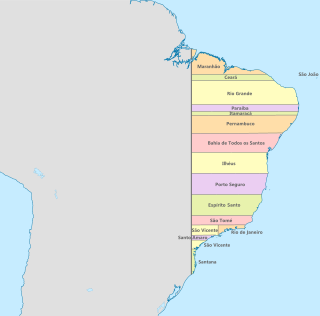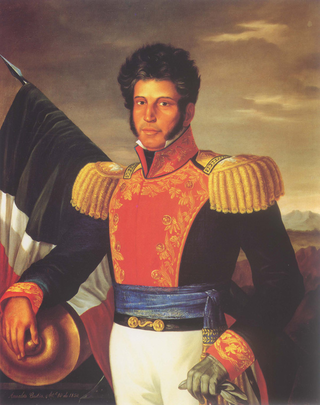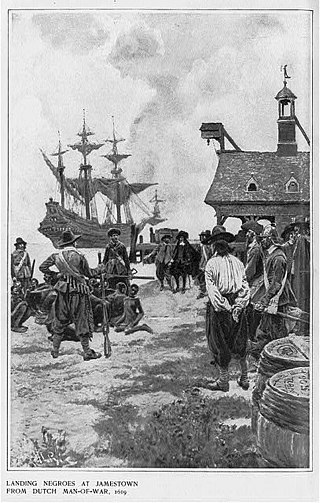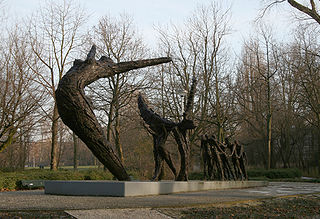
The Atlantic slave trade or transatlantic slave trade involved the transportation by slave traders of enslaved African people, mainly to the Americas. The outfitted European slave ships of the slave trade regularly used the triangular trade route and its Middle Passage, and existed from the 16th to the 19th centuries. The vast majority of those who were transported in the transatlantic slave trade were from Central and West Africa who had been sold by West African slave traders to European slave traders, while others had been captured directly by the slave traders in coastal raids; European slave traders gathered and imprisoned the enslaved at forts on the African coast and then brought them to the Americas. Except for the Portuguese, European slave traders generally did not participate in the raids because life expectancy for Europeans in sub-Saharan Africa was less than one year during the period of the slave trade. Portuguese coastal raiders found that slave raiding was too costly and often ineffective and opted for established commercial relations.

New Spain, officially the Viceroyalty of New Spain, originally the Kingdom of New Spain, was an integral territorial entity of the Spanish Empire, established by Habsburg Spain. It was one of several domains established during the Spanish conquest of the Americas, and had its capital in Mexico City. Its jurisdiction comprised a large area of the southern and western portions of North America, mainly what is now Mexico and the Southwestern United States, but also California, Florida and Louisiana; Central America, the Caribbean, and northern parts of South America; several Pacific archipelagos, most notably the Philippines and Guam. Additional Asian colonies included "Spanish Formosa", on the island now known as Taiwan.

Puebla de Zaragoza, formally Heroica Puebla de Zaragoza, formerly Puebla de los Ángeles during colonial times, or known simply as Puebla, is the seat of Puebla Municipality. It is the capital and largest city of the state of Puebla, and the fourth largest city in Mexico, after Mexico City, Monterrey, and Guadalajara. A viceregal era planned city, it is located in the southern part of Central Mexico on the main route between Mexico City and Mexico's main Atlantic port, Veracruz—about 100 km (62 mi) east southeast of Mexico City and about 220 km (140 mi) west of Veracruz.

Slavery in the colonial history of the United States refers to the institution of slavery that existed in the European colonies in North America which eventually became part of the United States of America. Slavery developed due to a combination of factors, primarily the labor demands for establishing and maintaining European colonies, which had resulted in the Atlantic slave trade. Slavery existed in every European colony in the Americas during the early modern period, and both Africans and indigenous peoples were targets of enslavement by European colonists during the era.

Colonial Brazil comprises the period from 1500, with the arrival of the Portuguese, until 1815, when Brazil was elevated to a kingdom in union with Portugal. During the 300 years of Brazilian colonial history, the main economic activities of the territory were based first on brazilwood extraction, which gave the territory its name; sugar production ; and finally on gold and diamond mining. Slaves, especially those brought from Africa, provided most of the workforce of the Brazilian export economy after a brief initial period of Indigenous slavery to cut brazilwood.

The Asiento de Negros was a monopoly contract between the Spanish Crown and various merchants for the right to provide enslaved Africans to colonies in the Spanish Americas. The Spanish Empire rarely engaged in the transatlantic slave trade directly from Africa itself, choosing instead to contract out the importation to foreign merchants from nations more prominent in that part of the world, typically Portuguese and Genoese, but later the Dutch, French, and British. The Asiento did not concern French or British Caribbean but Spanish America.

Slavery in the Spanish American viceroyalties was an economic and social institution which existed throughout the Spanish Empire including Spain itself. Enslaved Africans were brought over to the continent for their labour, indigenous people were enslaved until the 1543 laws that prohibited it.

Black Peruvians or Afro-Peruvians are Peruvians of mostly or partially African descent. They mostly descend from enslaved Africans brought to Peru after the arrival of the conquistadors.

The first wave of European colonization began with Spanish and Portuguese conquests and explorations, and primarily involved the European colonization of the Americas, though it also included the establishment of European colonies in India and in Maritime Southeast Asia. During this period, European interests in Africa primarily focused on the establishment of trading posts there, particularly for the African slave trade. The wave ended with the British annexation of the Kingdom of Kandy in 1815 and the founding of the colony of Singapore in 1819.

Afro-Mexicans played an important role in the Mexican War of Independence, most prominently with insurgent leader Vicente Guerrero, who became commander in chief of the insurgency. The initial movement for independence was led by the American-born Spaniard priest Miguel Hidalgo y Costilla in central Mexico. White Mexicans quickly abandoned the movement for independence which had become more of a social revolution, with Indians, Blacks, mixed-race castas, and other plebeians seeking social equality. The movement for independence remained active on the Gulf Coast and the Pacific Coast, where there were large concentrations of Afro-Mexicans. The royal army and the insurgent forces had reached a stalemate militarily, but the equation changed in 1820. American-born Spaniard and royalist officer Agustin de Iturbide sought an alliance with the insurgents led by Guerrero. Iturbide and the white creoles sought independence, but expected that racial hierarchies would continue in the post-independence period. Guerrero and other Afro-Mexicans demanded that they would be equal citizens and not until Iturbide acceded to that demand did the Afro-Mexican forces sign on to the Plan of Iguala which laid out the terms for the insurgency movement.

Catarina de San Juan, known as the China Poblana, was an Asian-born woman who was enslaved and brought to New Spain via the Spanish East Indies and later became revered as a saint in Mexico. Her true origin is unclear, but according to legend her original name was Mirra and she belonged to a noble family from India. She was allegedly kidnapped by Portuguese pirates and sold in the Philippines as a slave, converting to Catholicism and adopting the Christian name Catarina de San Juan. She was then transported across the Pacific Ocean to Spanish Mexico, where she continued to work as a slave, married, and eventually became a beata – an ascetic woman or anchorite who adheres to personal religious vows without entering a convent – in Puebla de Zaragoza. Upon her death in 1688, Catarina de San Juan was buried in the sacristy of the Jesuit Templo de la Compañía de Jesús in Puebla, in what is popularly known as Tumba de la China Poblana.

During and after the European colonization of the Americas, European settlers practiced widespread enslavement of Indigenous peoples. In the 15th Century, the Spanish introduced chattel slavery through warfare and the cooption of existing systems. A number of other European powers followed suit, and from the 15th through the 19th centuries, between two and five million Indigenous people were enslaved, which had a devastating impact on many Indigenous societies, contributing to the overwhelming population decline of Indigenous peoples in the Americas.

Afro-Mexicans, also known as Black Mexicans, are Mexicans who have heritage from sub-Saharan Africa and identify as such. As a single population, Afro-Mexicans include individuals descended from both free and enslaved Africans who arrived to Mexico during the colonial era, as well as post-independence migrants. This population includes Afro-descended people from neighboring English, French, and Spanish-speaking countries of the Caribbean and Central America, descendants of enslaved Africans in Mexico and those from the Deep South during Slavery in the United States, and to a lesser extent recent migrants directly from Africa. Today, there are localized communities in Mexico with significant although not predominant African ancestry. These are mostly concentrated in specific communities, including the populations of the Oaxaca, Huetamo, Lázaro Cárdenas, Guerrero, and Veracruz states.

Slavery in Latin America was an economic and social institution that existed in Latin America before the colonial era until its legal abolition in the newly independent states during the 19th century. However, it continued illegally in some regions into the 20th century. Slavery in Latin America began in the pre-colonial period when indigenous civilizations, including the Maya and Aztec, enslaved captives taken in war. After the conquest of Latin America by the Spanish and Portuguese, of the nearly 12 million slaves that were shipped across the Atlantic, over 4 million enslaved Africans were brought to Latin America. Roughly 3.5 million of those slaves were brought to Brazil.

The White Lion was an English privateer operating under a Dutch letter of marque which brought the first Africans to the English colony of Virginia in 1619, a year before the arrival of the Mayflower in New England. Though the African captives were sold as indentured servants, the event is regarded as the start of African slavery in the colonial history of the United States.

Slavery was practiced in Colombia from the beginning of the 16th century until its definitive abolition in 1851. This process consisted of trafficking in people of African and indigenous origin, first by the European colonizers from Spain and later by the commercial elites of the Republic of New Granada, the country that contained what is present-day Colombia.
Slavery in New Spain was based mainly on the importation of slaves from West and Central Africa to work in the colony in the enormous plantations, ranches or mining areas of the viceroyalty, since their physical constitution supposedly made them suitable for working in warm areas.
António Fernandes de Elvas was a Portuguese-born merchant, including investor in pepper tax farm and Asian spices. Fernandes de Elvas and his family were Marranos; that is to say Sephardic Jews who conformed outwardly as Cristão-Novo due to the demands of the Portuguese Crown but privately continued to adhere to Judaism. He was contracted by the Spanish Empire with an official asiento to provide their colonies in the Spanish Americas with African slaves from 27 September 1615 to 1 April 1623. During this time, he was the Contratodore for the Atlantic slave trade in Portuguese West Africa: Angola, Cape Verde and Guinea. He was succeeded in his position as monopolist for providing slaves to the Spanish by a fellow Marrano, Manuel Rodrigues Lamego.
Manuel Rodrigues de Lamego was a Portuguese-born merchant and slave trader active in Europe, Africa, Asia and the Americas. Rodrigues de Lamego was a Marrano. He was contracted by the Spanish Empire with an official asiento to provide their colonies in the Spanish Americas with African slaves from 1 April 1623 to 25 September 1631. During this time, he was the Contratodore for the Atlantic slave trade in Angola's Portuguese West African territory. Contrary to his predecessor as asiento holder, António Fernandes de Elvas, he was not the Contratodore for Cape Verde and Guinea. After his tenure, he was succeeded as asiento holder by Melchor Gómez Angel and Cristóvão Mendes de Sousa, while he was succeeded as Contratodore for Angola by Henrique Gomes da Costa.

The history of slavery in the Netherlands dates back to the period of classical antiquity. During the early modern period, Dutch slave traders bought and sold over 1.6 million enslaved people. The Netherlands abolished Dutch involvement the Atlantic slave trade in 1814 under diplomatic pressure from the United Kingdom, but slavery would continue to exist in the Dutch colonial empire until 1863.














